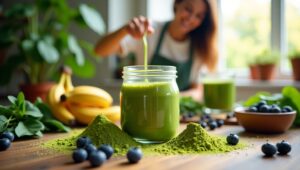Vegan cooking techniques: Many people today opt for a vegan diet and lifestyle for various reasons, including those related to health, ethics, and the environment. Yet, if you’re used to cooking using animal-based items, veganism may seem like a restriction at first. You can make your plant-based meals as tasty and enjoyable as any other meal with a little ingenuity and familiarity with vegan cooking techniques. In this article, we will go over 10 vegan cooking techniques that will help you become a better cook.
Table of Contents
ToggleList of vegan cooking techniques
1. Roasting
Vegetables’ inherent sugars and flavors can be brought out wonderfully through roasting. To roast vegetables, simply toss them in olive oil and seasonings before placing them in the oven. Vegetables that have been roasted can be eaten alone or used as a topping for salads or pasta.
2. Barbecue
Vegetables grilled on the barbecue are delicious. Vegetables are delicious when grilled on either an indoor or outdoor barbecue. For a smokey, burnt taste, try grilling eggplant, zucchini, peppers, and mushrooms.
3. Steamed
Steaming is a mild cooking method that helps vegetables keep their nutrients and flavors. Steaming vegetables in a steamer basket or a saucepan filled with water is a quick and easy way to cook them. Vegetables prepared by steaming have many applications in the kitchen.
4. Sauteing
Vegetables are sautéed by rapidly frying them in a hot pan with a touch of oil. Onions, garlic, peppers, and mushrooms all benefit from this method. To enhance the flavor, sprinkle on some herbs and spices.
5. Baking
Vegetables like potatoes, sweet potatoes, and squash bake up deliciously when given the opportunity to do so. Just throw them in the oven and cook them until they’re soft and golden. You can use baked vegetables as a side dish or add them to a casserole or stew.
6. Stir-Frying
Vegetables are stir-fried by rapidly heating them in a hot wok or skillet with a small amount of oil. Vegetables like broccoli, carrots, and snap peas benefit well from this method. For a delicious Asian twist, stir in some soy sauce and ginger.
7. Braising
Vegetables can be braised until they are tender and tasty by cooking them slowly in a liquid. Vegetables such as cabbage, carrots, and Brussels sprouts benefit well from this method. Vegetable broth and herbs can be added for depth of flavor.
8. Pureeing
When vegetables are mixed until they have a creamy consistency, they are pureed. This method works best with cauliflower, butternut squash, and sweet potatoes. Soups and spaghetti sauces can benefit greatly from the addition of pureed veggies.
9. Fermenting
By soaking vegetables in a brine for a few days or weeks, you can make them last longer. This process is called fermentation. Cabbage, carrots, and cucumbers are some of the best candidates for this method. Fermented veggies are versatile and can be used in many different ways.
10. Raw
So, at long last, you can eat raw vegetables. Salads, wraps, and even smoothies can benefit from the addition of raw vegetables. For more texture and taste, sprinkle on some nuts, and seeds, and drizzle on some dressing.
Related Article: 20 Surprising Facts About Veganism.
What are the basics of vegan cooking techniques?
The basics of vegan cooking involve using plant-based ingredients and avoiding all animal products. Here are some key points to keep in mind when cooking vegan:
- Use plant-based protein sources: Instead of getting your protein from meat, poultry, and fish, you should obtain it from plants. Lentils, chickpeas, beans, tofu, tempeh, seitan, and plant-based protein powders all fall under this category.
- Experiment with plant-based milk and dairy alternatives: There is a wide variety of milk and cheese replacements that are made from plants, including cashew cheese, coconut milk, almond milk, and soy milk, among others. They can stand in for milk and cheese in a variety of recipes.
- Emphasize whole, unprocessed foods: Fruits, vegetables, whole grains, legumes, nuts, and seeds are all examples of entire, unprocessed foods that should form the backbone of a vegan diet. These foods can aid in the prevention of nutrient shortages due to their high nutrient density.
- Use herbs and spices for flavour: Herbs and spices have the potential to provide vegan foods additional layers of flavor. To determine which blends of herbs and spices provide the flavor profiles you like most, you should try a variety of various combinations.
- Be mindful of ingredient substitutions: When converting non-vegan recipes to vegan ones, it is essential to pay attention to the different ingredient combinations that are possible. Eggs, for instance, can be substituted with ground flax or chia seeds; butter made from dairy products can be switched out for vegan butter or coconut oil; and meat can be replaced with sources of protein derived from plants.
By remembering these guidelines, anyone can prepare plant-based meals that are healthful, gratifying, and full of flavour.
Conclusion:
Vegan cuisine need not be uninteresting and tasteless. These 10 vegan cooking methods will have you making tasty, flavorful plant-based meals that will satisfy you just as much as any other meal. These techniques will take your vegan cooking to the next level, whether you’re an expert chef or new to the diet. Feel free to experiment in the kitchen.









